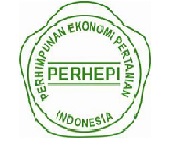Pelatihan Pembuatan Cairan Serbaguna Eco-Enzyme dari Sampah Organik dan Cara Pemanfaatannya di Desa Gondangmanis, Bae, Kudus
Abstract
Training on Making Eco-Enzyme Multipurpose Liquids from OrganicWastes and How to Use in Gondangmanis Village, Bae, Kudus. Eco-Enzyme (EE) is a multifunctional liquid produced from anaerobic fermentation of organic waste, especially from fresh fruit and vegetable wastes. Until now, most Indonesian citizens have not known about this enzyme, including the partner, residents of Gondangmanis Village, Bae District, Kudus Regency. This training aims to enable the partners to produce EE from organic wastes at the household level and its application. The direct benefit of this activity is to add value to household waste. The indirect benefit is to increase the volume of recyclable wastes towards zero waste. The used method consisted of lectures, practices of EE production, storage, and application. The EE production practice used a plastic drum with a capacity of 120 liter filled with 90 liter of water, 27 kg of organic wastes, and 9 kg of molasses. The result showed that total EE produced was 73 liter, smells good with light brown, and at a pH of 3.0. The partner used the EE for household cleaning, air purification, and floodwater purification. There is a percentage increase in participants' understanding of 90% who initially did not know EE to be able to make and apply it. Using organic waste for EE production can reduce as much as 50% of the amount of organic waste.
Keywords
Full Text:
PDF (Bahasa Indonesia)References
Arun, C., & Sivashanmugam, P. (2015). Solubilization of waste activated sludge using a garbage enzyme produced from different pre-consumer organic waste. RSC Advances, 5(63). https://doi.org/10.1039/c5ra07959d.
Chandra, Y. N., Hartati, C. D., Wijayanti, G., & Gunawan, H. G. (2020). Sosialisasi Pemanfaatan Limbah Organik Menjadi Bahan Pembersih Rumah Tangga. Prosiding Seminar Nasional Pengabdian Kepada Masyarakat, 1(2011), 77. http://journal.unj.ac.id/unj/index.php/snppm/article/view/19671 .
Dinas Pertanian Pangan Demak. (2021). Dasyatnya manfaat eco enzym untuk pertanian. https://dinpertanpangan.demakkab.go.id/?p=3325. Diakses pada tanggal 20 April 2022.
Etienne, A., Génard, M., Lobit, P., Mbeguié-A-Mbéguié, D., & Bugaud, C. (2013). What controls fleshy fruit acidity? A review of malate and citrate accumulation in fruit cells. In Journal of Experimental Botany (Vol. 64, Issue 6). https://doi.org/10.1093/jxb/ert035
Hasanah, Y., Mawarni, L., & Hanum, H. (2021). Eco enzyme and its benefits for organic rice production and disinfectant. Journal of Saintech Transfer, 3(2), 119–128. https://doi.org/10.32734/jst.v3i2.4519
Ijong. (2020). Proses Penelitian tentang manfaat eco enzyme lebih dari 30 tahun oleh Doktor Rosukon Thailand dan dikembangkan oleh Doktor Joean Oon dari Malaysia. https://fokusberitanasional.net/proses-penelitian-tentang-manfaat-eco-enzyme-lebih-dari-30-tahun-oleh-doktor-rosukon-thailand-dan-dikembangkan-oleh-doktor-joean-oon-dari-malaysia/. Diakses pada tanggal 23 April 2021.
Ikai, H., Nakamura, K., Shirato, M., Kanno, T., Iwasawa, A., Sasaki, K., Niwano, Y., & Kohno, M. (2010). Photolysis of hydrogen peroxide, an effective disinfection system via hydroxyl radical formation. Antimicrobial Agents and Chemotherapy, 54(12). https://doi.org/10.1128/AAC.00751-10
Juniartini, N. L. P. (2020). Pengelolaan Sampah Dari Lingkup Terkecil dan Pemberdayaan Masyarakat sebagai Bentuk Tindakan Peduli Lingkungan. Jurnal Bali Membangun Bali, 1(1), 27-40. https://doi.org/10.51172/jbmb.v1i1.106
Larasati, D., Astuti, A. P., & Maharani, E. T. (2020). Uji Organoleptik Produk Eco-Enzyme dari Limbah Kulit Buah (Studi Kasus di Kota Semarang). Seminar Nasional Edusainstek.
Luthfiyyah, A., P, Y. S., & Farabi, A. (2010). Konsep Eco-Community Melalui Pengembangan Eco-Enzyme Sebagai Usaha Pengolahan Sampah Organik Secara Tuntas Pada Level Rumah Tangga. Kemampuan Koneksi Matematis (Tinjauan Terhadap Pendekatan Pembelajaran Savi), 53(9).
Madhuri, S., Hegde, A. U., S., S., & Kekuda, T. R. P. (2014). Antimicrobial activity of citrus sinensis and citrus aurantium peel extracts. Journal of Pharmaceutical & Scientific Innovation, 3(4). https://doi.org/10.7897/2277-4572.034174
Mugitsah, A. (2021). The Amazing Eco-Enzyme (Kimia Kontekstual: Green Chemistry dan Nilai Islam). https://pubhtml5.com/khrv/qlsf. Diakses tanggal 08 September 2021.
Muliarta, I. N., & Darmawan, I. K. (2021). Processing Household Organic Waste into Eco-Enzyme as an Effort to Realize Zero Waste. Agriwar Journal, 1(1).
Pakki, T., Adawiyah, R., Yuswana, A., Namriah, Dirgantoro, M. A., & Slamet, A. (2021). Pemanfaatan Eco-Enzyme Berbahan Dasar Sisa Bahan Organik Rumah Tangga dalam Budidaya Tanaman Sayuran di Pekarangan. Prosiding PEPADU 2021: Seminar Nasional Pengabdian Kepada Masyarakat, 3.
Poompanvong, R., Oon, J., & Oei, J. (2021). Modul Belajar Pembuatan Eco-Enzyme. Revisi 2. Modul Belajar Pembuatan Eco-Enzyme. http://iluni1381.org/images/pdf/Modul_EEN_2021.pdf. Diakses tanggal 10 Mei 2021.
Ramli, I., & Jap, Y. P. (2021). Eco enzyme pemberdayaan kelompok petani Desa Ciranjang Cianjur tahun 2021. Jurnal Bakti Masyarakat Indonesia, 4(2). https://doi.org/10.24912/jbmi.v4i2.12896
Rini, T. S., Kusuma, M. N., Pratiknyo, Y. B., & Purwaningrum, S. W. (2020). Kajian potensi gas rumah kaca dari sektor sampah di tempat pemrosesan akhir sampah. Journal of Research and Technology, 6(1), 97–107. https://doi.org/2477 –6165
Santividya, S. (2018). Eco-Enzyme: Multipurpose liquid from organic waste. https://waste4change.com/blog/eco-enzyme-multipurpose-liquid-from-organic-waste/. Diakses pada tanggal 22 November 2021.
Sembiring, S. D. B. J., Ginting, N., Umar, S., & Ginting, S. (2021). Effect of Eco Enzymes Concentration on Growth and Production of Kembang Telang Plant (Clitoria ternatea L.) as Animal Feed. Jurnal Peternakan Integratif, 9(1).
Septiani, U., Oktavia, R., Dahlan, A., Tim, K. C., & Selatan, K. T. (2021). Eco Enzyme : Pengolahan sampah rumah tangga menjadi produk serbaguna di Yayasan Khazanah Kebajikan. Jurnal Universitas Muhamadiyah Jakarta, 2(1).
Verma, D., Singh, A. N., & Shukla, P. A. K. (2019). Use of Garbage Enzyme for Treatment of Waste Water. International Journal of Scientific Resarch and Review, 7(7).
Yuliandewi, N. W., I Made, S., & IGN., A. W. (2018). Utilization of Organic Garbage as “Eco Garbage Enzyme” for Lettuce Plant Growth (Lactuca Sativa L.). International Journal of Science and Research (IJSR), 7(2), 1521–1525. https://doi.org/10.21275/ART2018367
DOI: https://doi.org/10.20961/prima.v6i1.60122
Refbacks
- There are currently no refbacks.
View My Stats

This work is licensed under a Creative Commons Attribution-ShareAlike 4.0 International License.


.jpg)



1.jpg)











